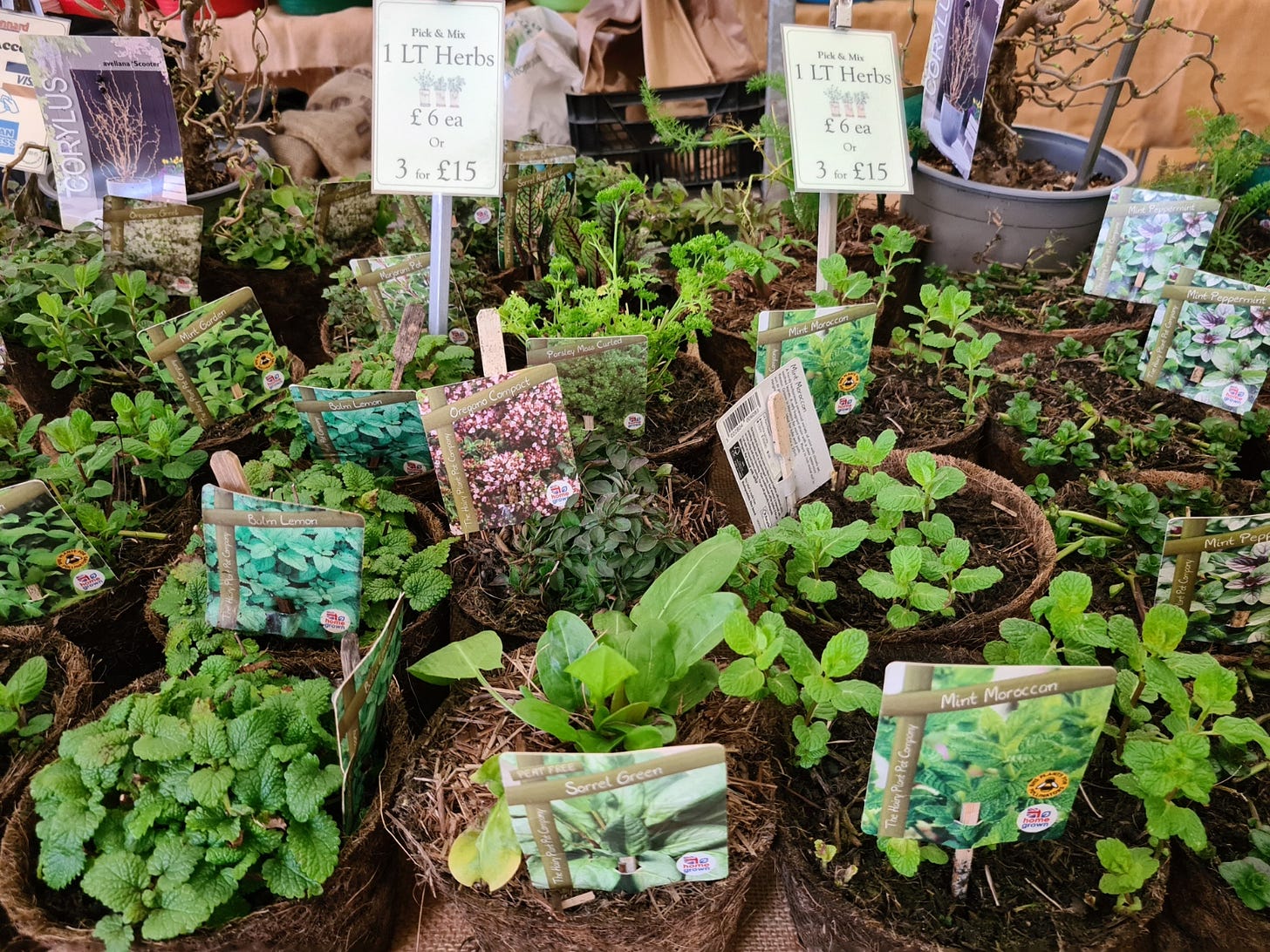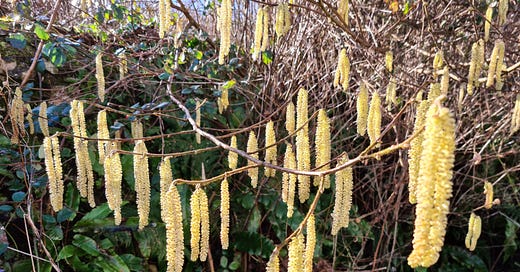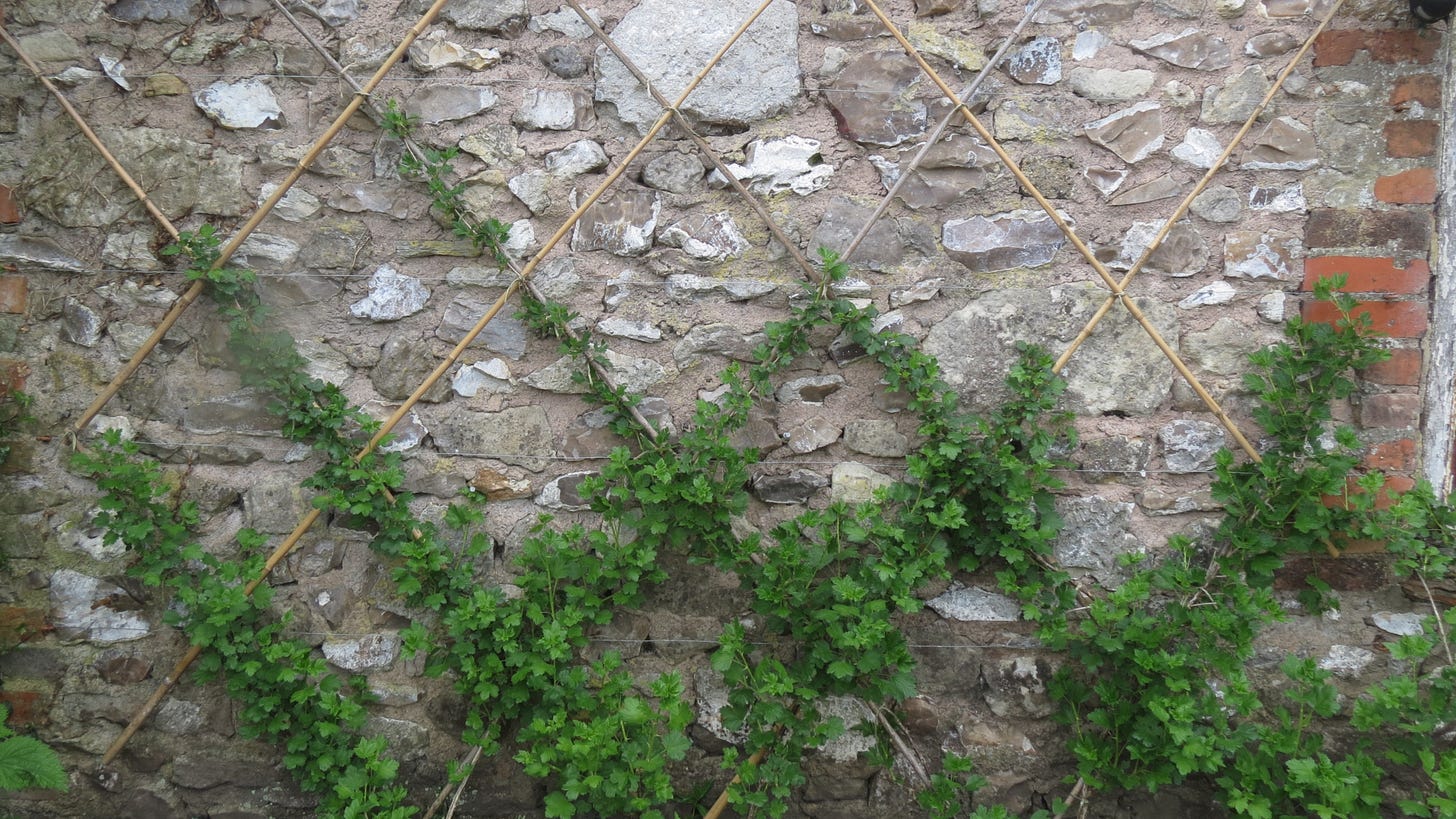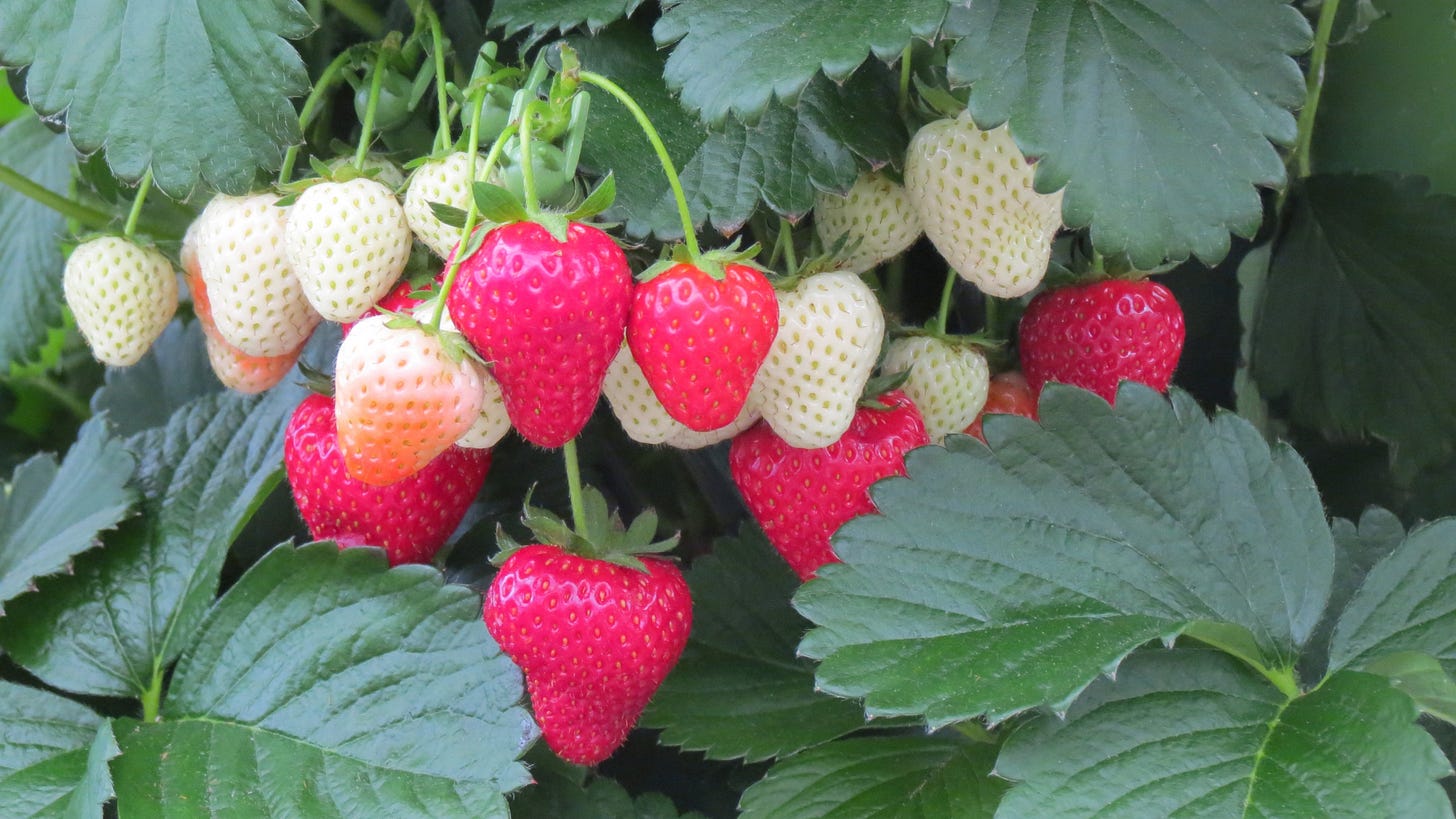As the world holds its breath waiting for spring to unfurl its lovely face to the sky, we gardeners need a little distraction. I get so impatient at this time of year: you can do a little here and there (garlic and shallots planted? check; potatoes chitting? check; peppers and aubergines sown? check) but now it’s all about holding back, just a little longer, till we can start in earnest.
I am trying to use my waiting time well. When it’s raining, I’m cutting up waste cardboard into little cardboard box templates to make biodegradable pots, or filling wooden seed trays with newspaper modules so they’re ready and waiting when sowing begins in earnest. When it’s sunny, I’m outside doing the last of the clearing, fixing fences and finishing off pruning the fruit.
Fruit gives back so much for so little outlay in time or resources. It’s the ultimate in sustainability. These are mostly perennial plants, so those resources you do spend on producing fruit bushes or trees last a really, really long time; and because they’re permanently planted they sequester more carbon than vegetables, and keep your soil’s ecosystem intact and healthy too as it’s likely to stay un-dug for years, if not decades.
Don’t tell me there’s no room for fruit in your garden: it’s astonishing what you can squeeze in. My fan trained cherry trees take up almost no space on the ground and cover a 7.6m (25ft) stretch of fence with ease (that’s two trees, one Stella, the other Cherokee, though I’m finding the Stella is a little shy to fruit whereas the Cherokee is a lot more robust).
Even berries can be trained against the wall. I’m inordinately proud of my diamond trained gooseberry bushes: they occupy the wall of the garage, a stretch of about 2.4m (8ft), and I’ve chosen four different varieties. These are trained in a double cordon, each plant having two sideshoots trained diagonally in a V so they cross over at certain points, looking a bit like a trellis. I’m still developing it but it’s a lovely way to grow gooseberries: you can pick the fruit without having to plunge into a thorny, prickly bush, and even better, I have had no problems at all with sawfly since trying this. My theory is that there is no longer a heart to the bush where sawfly can hide their eggs (and the subsequent caterpillars) safe from predators: so the birds get any larvae there might be, and I suspect the sawfly don’t even bother laying their eggs as it’s so obviously an inhospitable environment for them.
This year I must dig up my raspberries: they have become increasingly exhausted and they’re producing a dwindling crop each year, despite all my efforts with the mulching. Raspberries – even the most vigorous ones – do occasionally run out of steam, and it’s been a hard few years for them what with the droughts and the floods. And besides, these particular canes are about 15 years old so I’ve had my money’s worth.
Once I’ve dug them up I will be replanting with a new variety – probably the rock-solid reliable Joan J – and starting again in a different spot to avoid any viruses that might have taken hold in the old bed. This leaves me with a lovely little dilemma: what do I put in their place? I am rather short of strawberries at the moment, so that’s the temptation, but on the other hand I do have a yen for a thornless blackberry (always plumper, and easier to pick, than the hedgerow blackberries, which I prefer to leave for the birds).
The other wonderful thing about fruit is that you can buy bare-root – no peat-based compost, no plastic pot, and if you buy from an organic supplier like the Organic Catalogue no pesticides either.
It takes a little work to buy new plants for the garden when you put sustainability first. I sow most of my veg from seed, of course (home-saved wherever possible) but occasionally you do have to buy a plant or ten. Fruit is one example, but herbs are another: you can raise, say, marjoram or mint from seed, root cuttings or divisions but sometimes you want a special variety, especially if you have a bit of a weakness for collecting different herb flavours like I do.
So when I go shopping I go to some trouble to find a good sustainable supplier. I would love to say I pop down to my local garden centre, and I would - if they would only supply peat-free plants in biodegradable pots (bare-root too would be wonderful).
But you just can’t find such a garden centre easily. I am very envious of you if you live near such a paragon: my local plant emporiums are stacked with lovely plants, but they all come with an unwanted side order of plastic pot, they’re grown in peat-based compost, fed with high-carbon artificial fertilisers and sprayed with pesticides to make sure they’re big and perfect to tempt a browsing customer. And I am simply not prepared to spend my money on things that trash the planet.
So I have a cherished list of suppliers who grow organically (so no artificial fertilisers or pesticides), use peat-free compost, and ideally supply plants wrapped in newspaper or cardboard. There are several herb suppliers who do this; and a growing number of vegetable plug plant growers too, making it easier for me to cheat later in the season when my brassica sowings have been chomped by slugs or the dog has sat on my nearly-ready tray of lettuces.
I do wish it were easier to shop like this, and that garden centres would wake up to how off-putting their wares are to any gardener who cares about the planet. But anyway, there it is: shopping green for the garden is possible, you just have to break out of the straitjackets imposed on us by the pile-it-high, sell-it-cheap and to hell with the planet approach of the last 50 years.

I will see if I can put together a post for you later this month with a list of my favourite sustainability-first fruit and herb suppliers. This week also sees the launch of our Beautiful Beans variety list, where I’ll run through all the varieties I’m planning to grow this year (I have built up quite a collection now!) and add any I’ve already grown and can talk about from first-hand experience. If you have favourite bean varieties you’d like to share, please do let us all know about them – I’ll add them to the database as well so it can be as comprehensive as we can make it.
In the meantime, may your shallots sprout with enthusiasm and may the sun dry out your soggy soil to fluffy, crumbly perfection. Happy gardening!







I really like your diamond gooseberry idea Sally. Very impressive/clever! ……. how long have they been growing against the wall?
When I started my garden (decades ago!), I wanted fruit. Fruit is expensive to buy and it is much tastier to eat what you grow. I raised some alpine strawberries from seed (for fun)and planted them in a trough on the patio - in the autmn I planted them around trees, under shrubs etc and now years later, I forage all summer for fruits for my yogurt - so delightful!
Autumn raspberries are the best - no netting required, you get so much fruit over a long period and a doddle to prune. Joan J is great, my fav. I also have Polka but hate the spines, lol. You might try boysenberries - they taste like winey blackberries (but you must not pick them just because they are black - make sure they are ripe first). A lovely fruit with no spines and late in the summer so no netting.
Looking forward to the sustainable suppliers - I agree that it can be v hard to find them locally. Hopefully more will come on board when they see there is a market